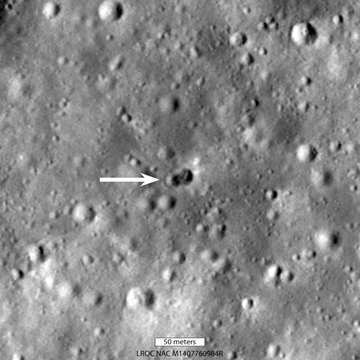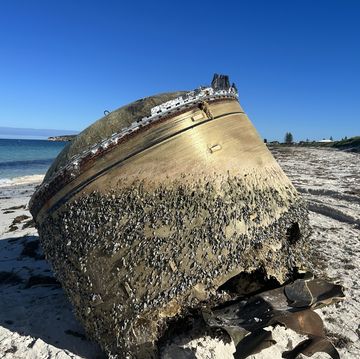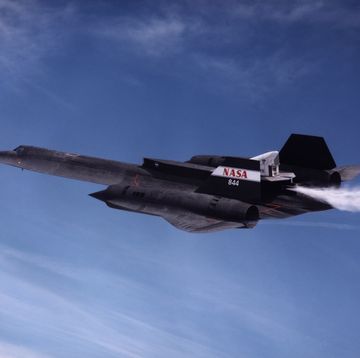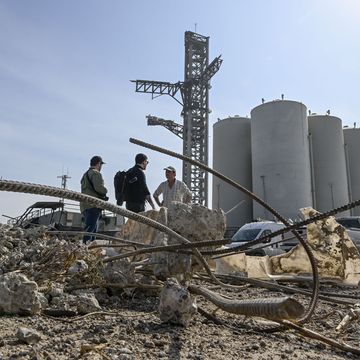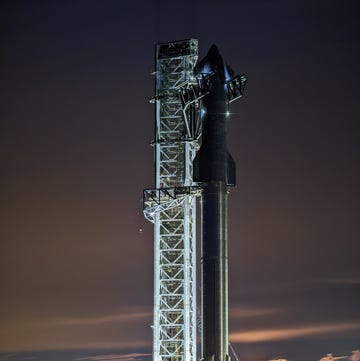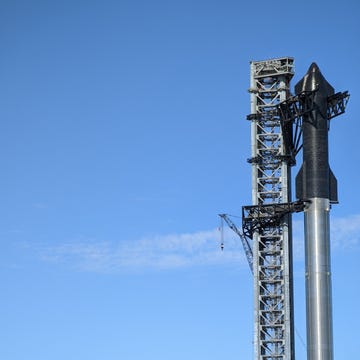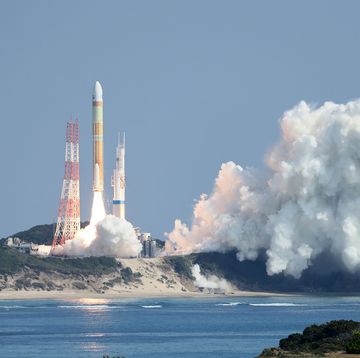Update: The Orbital Sciences Antares rocket on the ORB-3 commercial resupply mission to the International Space Station exploded into ball of fire above the launch pad 6 seconds after an on-time liftoff tonight at 6:22 from the Mid-Atlantic Regional Space Port on the Virginia cost. "We do have significant property damage and significant vehicle damage," was the understated announcement made by an official on the communications loop that went over the live feed on the shortly afterwards on the NASA TV website. For more, check out our developing story.
If all goes well, an Orbital Sciences Antares rocket will lift off tonight from the Mid-Atlantic Regional Spaceport in Wallops Island, Va., carrying more than just supplies for the International Space Station. The rocket's cargo also includes the first space hardware by the asteroid mining company Planetary Resources.
This will be the second launch attempt for the rocket on the so-called ORB-3 mission. Ten minutes before liftoff on Monday night, a boat wandered into the water below the rocket's planned flight path, putting those on board at risk if the rocket were to crash. The launch team will try again tonight at 6:22 pm Eastern.
Asteroid Hunting
The Washington state-based Planetary Resources, headed by former NASA Mars lander engineer and flight director Chris Lewicki and backed by big investors including Google's Larry Page, made a major splash a couple of years ago: It declared it would mine asteroids near the Earth to harvest their precious metals and other resources. (Get the full backstory on them in our 2012 cover story.) This is their first actual foray into space.
Among the 5,000 pounds of provisions, science experiments, and supplies that mission will carry up to the space station astronauts are 32 cubesats—10 x 10 x 10 cm satellites the ISS astronauts will launch into space. One of these is the Planetary Resources A3.
The 10-pound A3 is a technology demonstrator meant to pave the way for the company's planned Arkyd 100 series of privately funded space telescopes. These small telescopes will scan the skies for near-Earth asteroids that could be visited by later Arkyd robots. The little A3 has no telescope on board, but it will test avionics and software for its successors.
Planetary Resources hopes to launch its first Arkyd 100 telescope some time in 2015. The next wave—the Arkyd 200 series of space probes—will travel on intercept missions to the most promising asteroid mining prospects. Landing and mining bots will follow in the decades to come, harvesting platinum group metals and other resources, including water to be used as fuel for future space missions.
Planetary Resources raised more than $1.5 million in a 2013 Kickstarter campaign to fund the launch of the first Arkyd 100. Backers of the campaign were promised space selfies—photos of themselves to be displayed on a small screen aboard the spacecraft and photographed against the backdrop of the Earth.
Launch Viewing
The ORB-3 mission launching tonight will be the third commercial space station resupply mission for Orbital. The uncommon launch time, just after sunset, should allow the rocket to be sunlit in the night sky, rendering it visible up and down the Eastern seaboard.
If the mission stays on schedule, then astronauts on board the ISS will capture the ship with the station's robotic arm and berth it to the station's Harmony module. From there, the astronauts will unload the supplies and equipment along with the cubesats.
Watch tonight's launch live on NASA TV.




